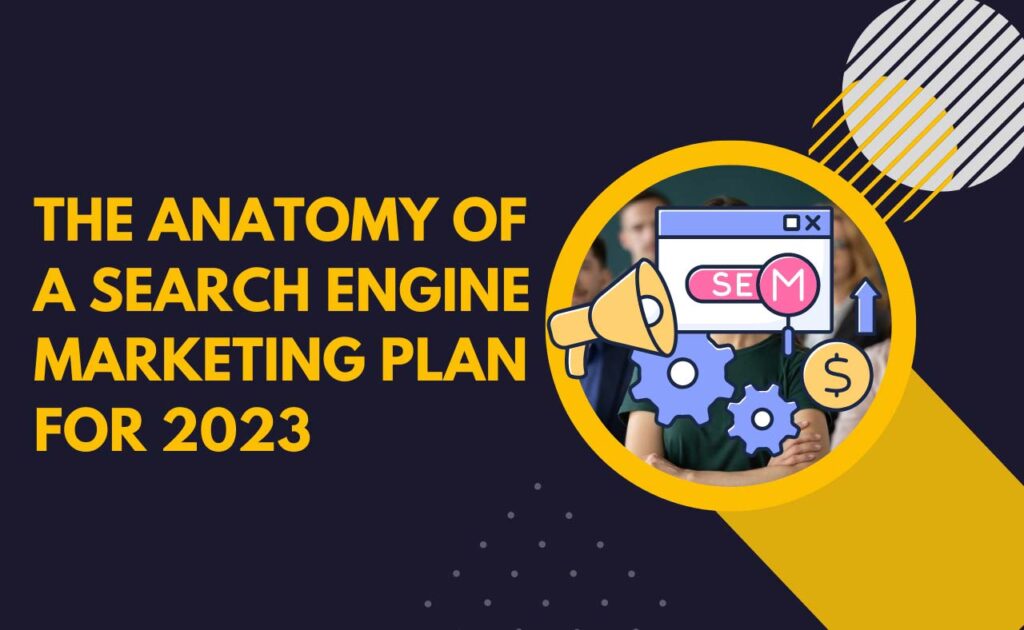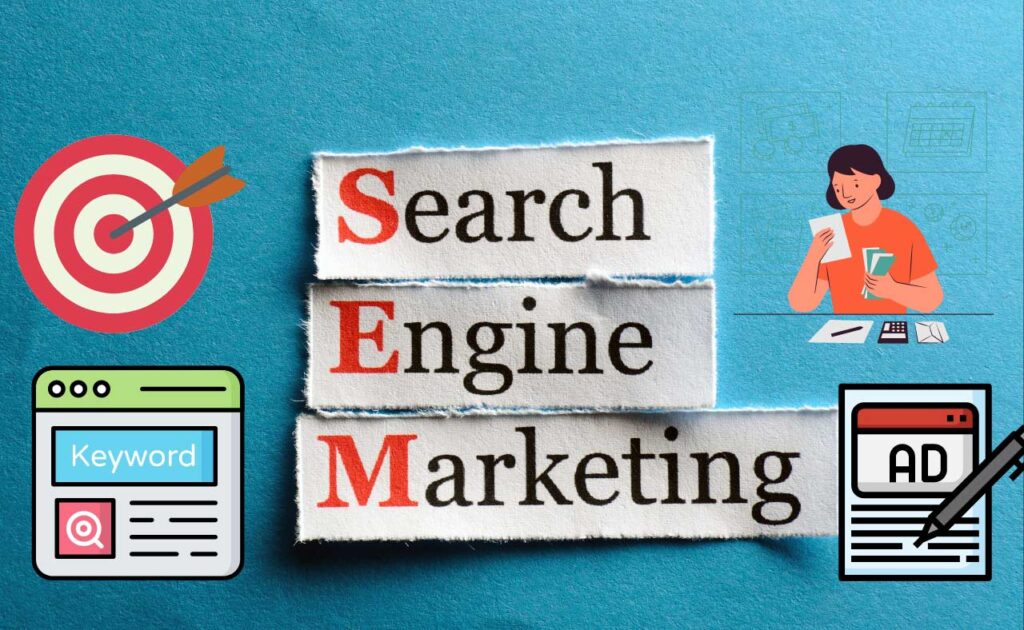
As we approach the end of 2022, it’s important for businesses to start thinking about their search engine marketing strategies for the upcoming year. A well-planned search engine marketing (SEM) strategy can be a key driver of traffic and revenue for a business, but it’s important to take a holistic approach and consider all the different components that make up a successful SEM plan.
In this blog post, we’ll take a look at the key components of a SEM plan for 2023, including defining what it is and why it matters, and exploring topics such askeyword research, ad copy and design, targeting, and budgeting. By understanding these components and how they work together, you’ll be well-equipped to create a comprehensive and effective SEM plan for your business.
What is Search Engine Marketing (SEM) and why does it matter?
Search engine marketing (SEM) is a form of digital marketing that involves promoting a website or business through paid advertisements that appear on search engine results pages (SERPs). SEM is often used interchangeably with search engine optimization (SEO), which is the practice of optimizing a website to rank higher in organic search results. However, while SEO focuses on improving a website’s ranking through unpaid methods, SEM involves paying for advertising to appear at the top of search results.
There are two main types of SEM: paid search advertising and display advertising. Paid search advertising, also known as pay-per-click (PPC) advertising, involves creating ads that appear at the top or bottom of search results when someone searches for a specific keyword or phrase. Advertisers only pay when someone clicks on their ad, hence the name pay-per-click.
Display advertising involves creating banner ads or other types of visual ads that appear on websites or other online platforms. These ads can be targeted to specific audiences based on demographics, interests, and other factors.
Costs and conversions differ between ads on the search network, versus the display network. In 2020, the average cost-per-click (CPC) for Google Ads was $2.32 for the search network and $0.58 for the display network.
Data also shows that search ads have a higher average click-through rate (CTR) of 3.17%. Compared with a CTR of 0.46% for ads on the display network. However, both components are still important in your overall strategy (for example, display ads are likely to get more eyeballs and so can be useful in awareness campaigns).
One of the main benefits of SEM is that it allows businesses to reach potential customers at the moment they are searching for products or services. This makes it an effective way to drive qualified traffic to a website and generate leads and sales. SEM also allows businesses to target specific keywords and phrases, which helps to ensure that their ads are being seen by people who are interested in what they have to offer.
Another advantage of SEM is that it is highly measurable. With tools like Google Analytics, businesses can track the effectiveness of their campaigns and make data-driven decisions about where to allocate their marketing budget. This level of transparency and accountability is not possible with traditional marketing methods.
How to build a 2023 Search Engine Marketing Plan

Keyword research
Keyword research is the foundation of any SEM plan. It involves identifying the terms and phrases that people are searching for on search engines, and determining how competitive those terms are. By understanding which keywords are most relevant and valuable to your business, you can create ad campaigns and website content that will attract the right audience.
There are a number of tools available to help with keyword research, including the Google Keyword Planner and Ahrefs. It’s important to conduct thorough keyword research to ensure that you’re targeting the right terms and maximizing the chances of your ads being seen by potential customers.
Ad copy and design
Once you’ve identified your target keywords, the next step is to create compelling ad copy and design that will grab the attention of potential customers. This includes both the text and visual elements of your ads, such as the headline, description, and images.
Effective ad copy should be clear, concise, and compelling, and should highlight the benefits of your product or service. It’s also important to include a call to action, such as “Learn More” or “Buy Now,” to encourage people to take the next step.
In terms of design, it’s important to create ads that are visually appealing and stand out in the search results. This can be achieved through the use of high-quality images, colors, and fonts that align with your brand.
Targeting
Once you’ve created your ad copy and design, the next step is to determine who you want to target with your ads. This can be based on a variety of factors, such as demographics, location, and interests.
Google Ads allows you to create targeted campaigns based on specific keywords, placements, and audiences. By carefully targeting your ads, you can ensure that they are seen by the right people and are more likely to result in conversions.
Your targeting will also affect the cost of your ads. For example, the retail industry has the highest average CPC (cost-per-click) at $2.75, and the healthcare and pharmaceuticals industry has the lowest average CPC at $1.15.
Budgeting
According to Google, businesses make an average of $2 in revenue for every $1 they spend on Google Ads. But it’s still important to build a budget when creating a SEM plan. This includes determining how much you’re willing to spend on your campaigns and how you want to allocate your budget across different ad groups and campaigns.
There are a number of factors that can impact your budget, such as the competitiveness of your target keywords and the cost-per-click (CPC) of your ads. It’s important to monitor your campaigns closely and adjust your budget as needed to ensure that you’re getting the best return on your investment.
–
Overall, SEM is an effective way for businesses to reach potential customers and drive qualified traffic to their website, and a well-planned search engine marketing plan for 2023 should include careful keyword research, compelling ad copy and design, targeted campaigns, and thoughtful budgeting. By considering all of these components and how they work together, you can create a successful SEM strategy that drives traffic and revenue for your business.




